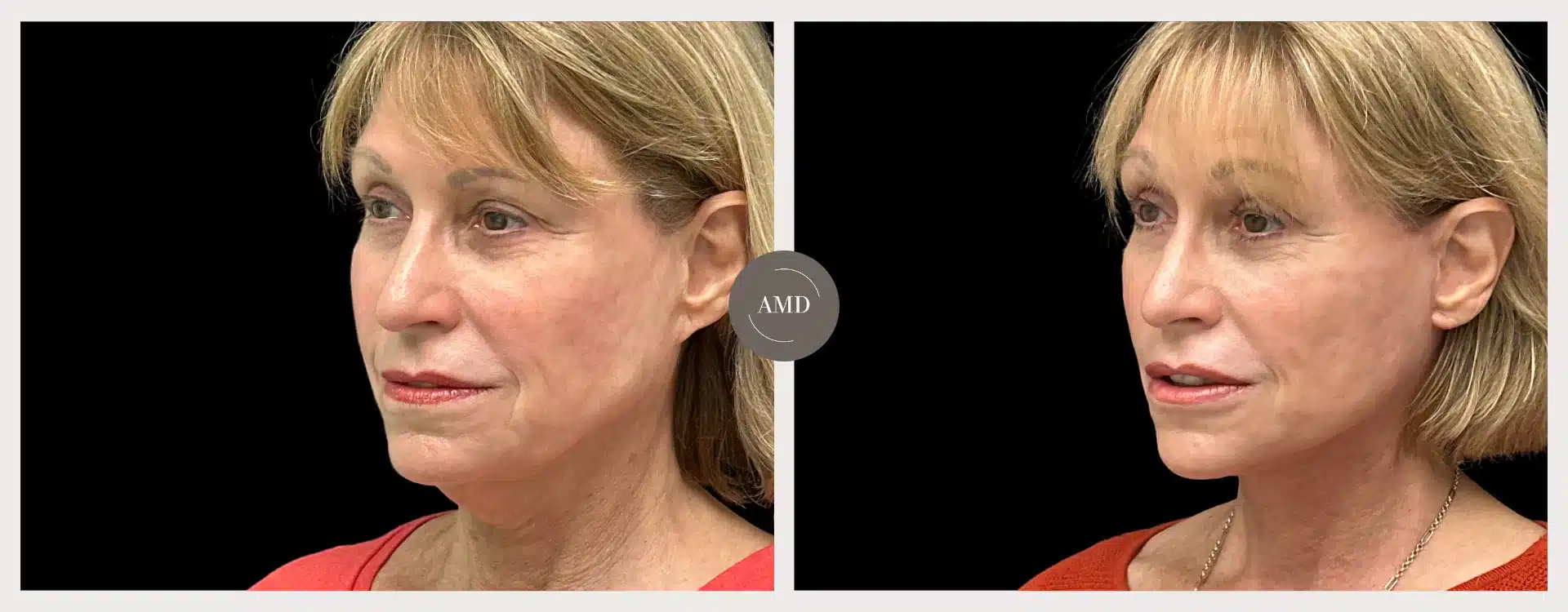Everyday there seems to be a new skin tightening treatment on the market that promises to be revolutionary… Non-Invasive! No Downtime! Surgical Results Without Surgery!
These new devices show up on every daytime talk show, in every magazine, and eventually on every corner in medspas in every city. After the hype simmers down, we discover that “revolutionary” comes with a bigger price tag than expected and that there is no evolution in the revolution. “Non-invasive” connotes multiple treatments and even more money, and often there are no significant results to write home about. “Surgical results without surgery” loses all meaning when even multiple treatments provide underwhelming improvement. The newest radio frequency (RF) and ultra sound techniques for skin tightening have not fulfilled their promise, but future technologies will bear youthful fruit. We simply don’t seem to be there yet.
One of the chief desires of patients in our Newport Beach plastic surgery office is to have improved skin tightening without surgery. What we are really talking about is improved facial tightening/lifting that involves both the skin and underlying tissues. Taut, smooth facial skin (and subcutaneous tissues) is certainly more youthful than skin that hangs, wrinkles, and folds. There are several proven options for improving the tone, texture, and elasticity of skin. Depending on which treatment you choose, the results will vary. Here we get real about facial tightening procedures from the OR to your plastic surgeon’s office to your own bathroom.
The Silver Bullet

When it comes to facial skin tightening the best treatment, the silver bullet if you will, is still a traditional face and neck lift. A facelift will remove “sags and bags” and excess skin as well as tighten the deeper SMAS (sub-muscular aponeurotic system) layer, which is comprised of more inelastic, fibrous tissue that can hold the tension when elevated and repositioned. This layer is the key to a natural appearing facelift as the overlying skin can then be re-draped with minimal tension. This combination creates the most natural results and best withstands the test of time.
Facelifts are performed in a surgery center and under general anesthesia, as a rule. An incision is placed along the hairline and inside the contours of the ear that, once healed, are difficult to perceive. Typically, our patients will stay the night of surgery in an overnight facility with a nurse to care for them. They go home from the surgery center with a head wrap and drains behind each ear that are removed early the next morning. Downtime varies, but most patients take between 7 to 10 days off from work or other social engagements. Physical exercise may resume in four weeks, and by six weeks all physical activities are back to normal.
Don’t Feel the Burn
Although today our practice sees more patients in their 40s and early 50s opting for a face/neck lift, not everyone is psychologically ready for this procedure, even if they are a good candidate. Some patients prefer a less-invasive approach to skin tightening and therefore, opt for a laser “lift” treatment.
Forget what you know about lasers from the past — a post-op face that looks like carpaccio followed by endless months of redness and oozing! First generation CO2 lasers were problematic for certain skin types causing more extensive tissue trauma. Arguably effective in resurfacing and tightening the skin, patients experienced significant post-procedure discomfort and extended healing times. Additionally, first generation CO2 lasers were associated with an increased risk of undesirable pigmentation changes (hyper and hypo) and scarring.
Laser therapy technology has dramatically improved and today, a Fractionated C02 laser is generally considered the gold standard among methods of skin resurfacing as it stimulates the body’s natural production of collagen fibers. More collagen means better tone and texture and produces a tightening effect. This laser is effective for smoothing facial wrinkles and softening lines. It is also useful in treating pigmentation irregularities, removing sun spots, age spots, as well as minimizing acne and surgical scars.
Newer fractional CO2 lasers provide finer control. Fractional technology uses multiple, microscopic laser beams to create small tunnels of ablation. In addition, it can be precisely manipulated to control the depth and penetration of “injury.” This is crucial when adjusting for different areas of the face as well as variations in skin type and pigmentation. Since it leaves bridges of untouched skin, there is reduced heat accumulation and maximal cooling of surrounding skin.
Fractional CO2 can be accomplished with convenience, minimal discomfort, and downtime. Application of a topical anesthetic prevents procedural discomfort, and any post-procedural discomfort is mild (roughly equivalent to a sunburn). Within 2 to 3 days, the skin will begin to peel, and in 4 to 6 days, makeup use can be resumed. Plan on 7 days for a full recovery. Optimal results appear within 60 to 90 days of this laser treatment and can last up to several years.
Lotions and Potions, Oh My!
As much as we all want to believe in the pretty porcelain-skinned models in magazines plugging skin tightening products, it just isn’t so. To date, there is no “magic potion” that will tighten and rejuvenate the skin to its younger nature with any kind of lasting result. (A girl can dream, though!) That being said, good skin care is essential for enhancing and maintaining tone and texture. A more even pigment and increased skin moisture will help to make the skin appear more taut. This kind of temporary firming can create a better palette for applying makeup and also helps to create an illusion of the skin being tighter.
There are three essential products everyone needs in their skin care regime. Here are three building blocks for good skin:
Topical Vitamin C: Topical vitamin C (ascorbic acid) can help combat collagen degradation and oxidative stress. Results from clinical trials show that when applied topically, vitamin C promotes collagen formation and mitigates the effects of free radicals, helping to maintain firm and youthful skin. But don’t expect to slather on the C and wake up the next day looking 10 years younger! When purchasing topical vitamin C, whether a cream or gel, make sure it contains L-Ascorbic Acid, which helps to boost absorption. Average shelf life of the product is three months, and it must be stored in a cool, dry place.
Retinol – For optimal collagen stimulation, pair your topical vitamin C with a retinol; just be sure not to use them together as they cancel out each other’s effectiveness. Retinol comes in varying strengths, ranging from .25 to 1.5. We suggest beginning with a .5 every other night and then graduating to the 1.0 strength.
Sunscreen – Sunscreen is mandatory to protect your skin against further environmental damage. However, not all sunscreens are equal. Even those that claim to be a 100 SPF may not offer the physical as well as the chemical protection. Make sure your sunscreen lists zinc or titanium oxide as a key ingredient.
For more information about fractionated CO2 laser peels and skin care products, please contact our office for a consultation at 949-430-6742.
Learn how your skin is aging. Let VISIA’s state-of-the-art computer analysis assess the health and youthfulness of your skin. Your personalized VISIA profile will reveal sun damage, fine lines/wrinkles, pore size, and more.




